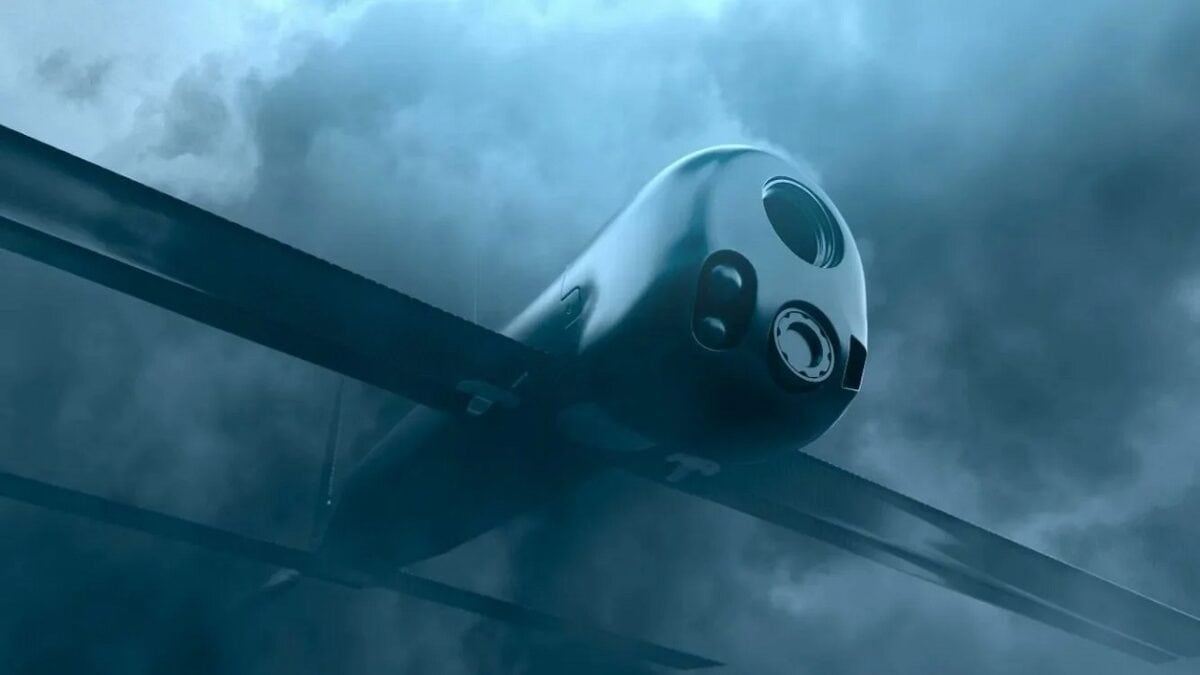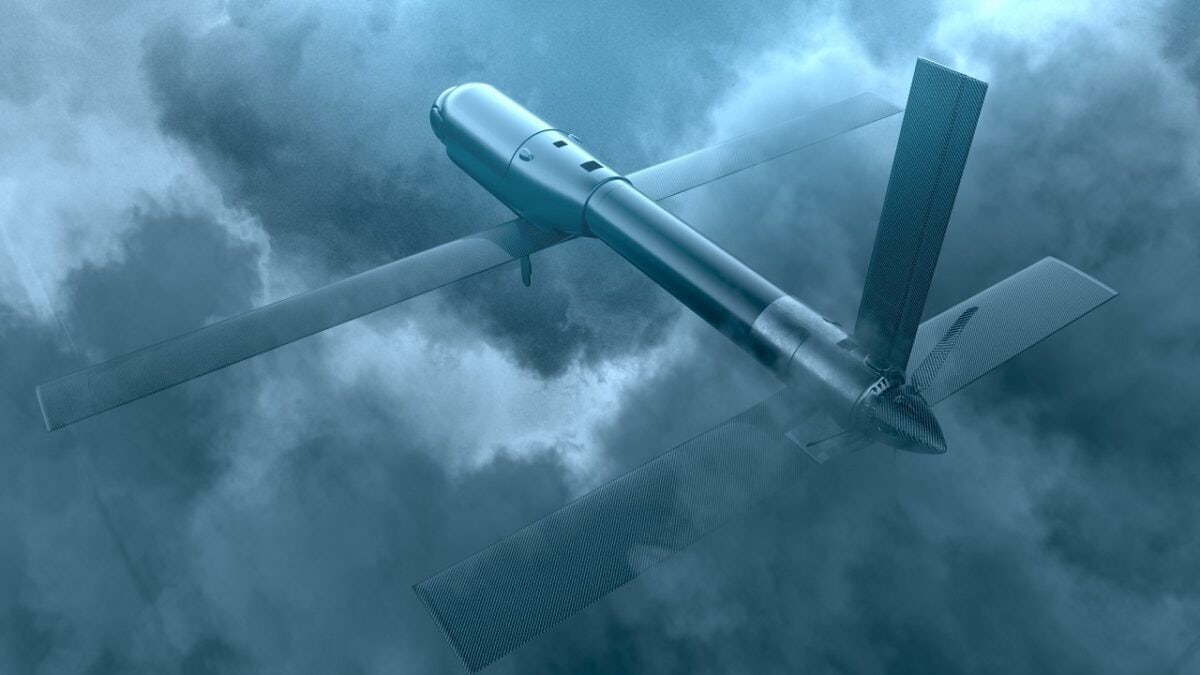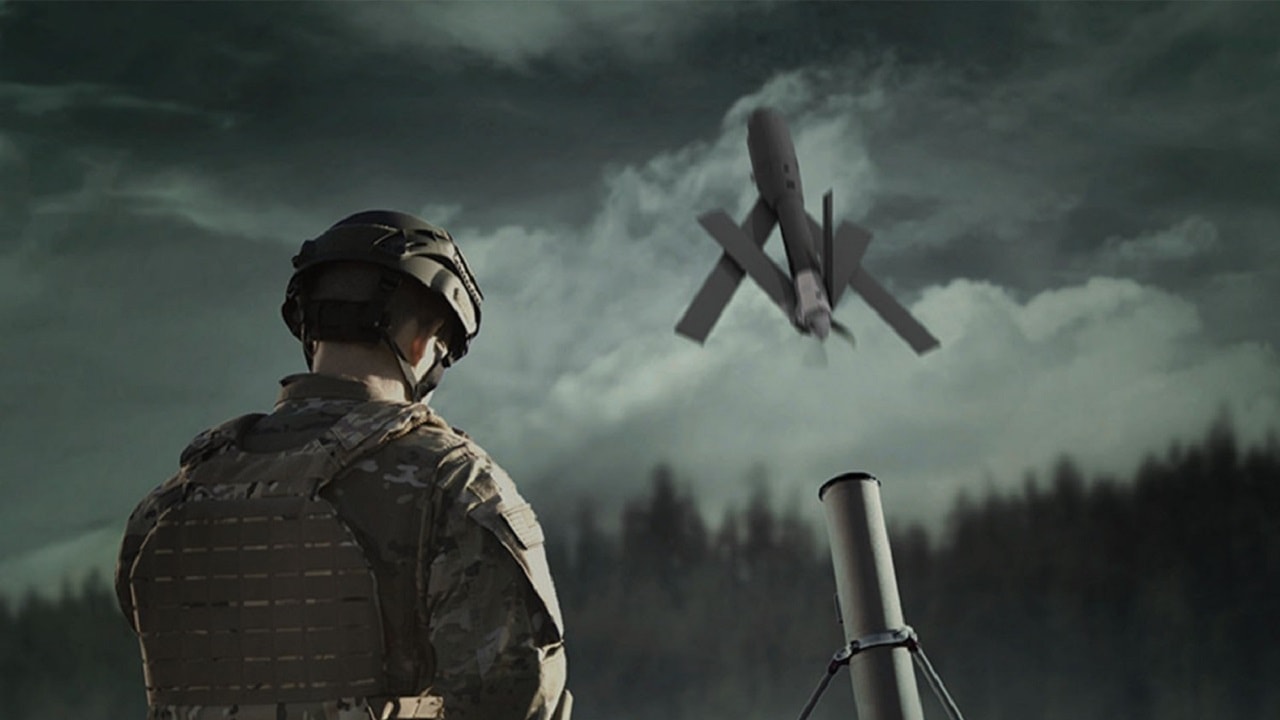The American-made Switchblade loitering drone – sometimes called a swarming “kamikaze” craft – has Ukraine hankering for more. Kyiv has already received the smaller “300” model, but what is more effective is the “600” variant that carries a big enough wallop to take out Russian tanks and armored vehicles. The U.S. Army is getting close to awarding a research and development contract for ten 600 suicide drones. The assignment could be wrapped up by the end of September.
More About the Switchblade
The Switchblade is made by AeroVironment out of Arlington, Virginia. The 300 can hit targets that are beyond visual range. Targeting is derived from a software system that provides rapid linkage to guide the drone to paydirt. Operators have a video connection for better intelligence, surveillance, and reconnaissance data.
300 Is Smaller and More for Anti-personnel Strikes
The Switchblade 300 has a range of six miles. It only has 15 minutes of endurance, but its speed is impressive – it cruises at 63 miles per hour with a top speed of 100 miles per hour when “dashing” to its target. This is a “rucksack” loitering munition that is only 5.5 pounds. The system is easy and quick to set up and launch.
The 600 Can Take Out Armor
The next brand with improved capabilities is the Switchblade 600 model. This carries the anti-armor payload that the Ukrainians desperately need. The defenders have been using commercial off-the-shelf quadcopters that drop grenades on tanks, but this requires a completely accurate targeting system. The 600 is much better at acquiring targets and penetrating armor.
Quick to Fire for Long Range Attacks
The 600 is heavier but it is still man-portable, but the system does weigh 120 pounds with all components, so it likely takes at least two people to carry it. AeroVironment considers this a “loitering missile.” Operators can set up the tube-launched system to fire in ten minutes. The 600 has an electro-optical infrared high-resolution sensor. It excels at long-range attacks since it has a maximum linked range of 56 miles. The loitering missile also has a 60-minute endurance time.
Change the Mission While In-Air
One neat thing about the 600 is operators have the ability to “wave off” or abort the mission if the facts on the ground change. This can happen multiple times. So, say the tanks or armored vehicles go from standstill to mobile, the soldier just needs to change the mission parameters by giving simple commands to the loitering missile. Operators can do this maneuver multiple times during flight. The 600 can also take out bunkers and emplacements with its penetrating warhead.

Switchblade Drone. Image Credit: Industry Handout.
The 19FortyFive has reported that a Switchblade 300 model attacked targets on the Russian side of the border in July. But this is probably a rare occurrence as most of the tanks and armored personnel carriers are in Ukraine. The Switchblade 300 is too small to do anything more than attack soft targets, which is why the Ukrainians want the 600.
Drone Expert Shares Knowledge with 19FortyFive
I queried Sarah Kreps, who is Director of the Technology Policy Institute at Cornell University and a Non-resident Senior Fellow at the Brookings Institute. Kreps is an expert on unmanned warfare.
Kreps said that normal air defense artillery is not ready or configured for the loitering munitions. “The Switchblade is hard to defend against because it has a smaller radar cross-section than the type of aircraft that a typical air defense system is oriented toward. It’s clear that Russia wasn’t ready for these kamikaze drones, and even now that they are we can see that they’re hard to stop. Ukraine has far more of these than they did the larger [Bayraktar] TB-2s, so they can use these with impunity, and even if some of them are shot down, others can get through and have both the psychological and military advantage of striking a target. Over the weekend some similar type of drone hit the Black Sea Fleet headquarters in Crimea. The fact that anything could get through to Sevastapol and hit this HQ, even if it did not destroy it, was a perceived win for Ukraine.”
Kreps believes the Ukrainians have found a weapon that will keep the Russians on their toes and force them to re-assess where and how they defend from counter-attacks.
“These munitions are being used as part of a combined arms campaign Ukraine is engaging in with Russia. The munitions alone are not going to win the war, or be the only weapon used. This is different from the U.S. counterterrorism context where we would launch a Reaper [drone] and strike a target. The point is for these drones to menace the Russians, keep them guessing, and force them to commit resources in ways that they otherwise would not, like now defending certain naval headquarters,” Kreps explained.

Switchblade drone that is used by Ukraine’s forces against Russia. Image Credit: Industry handout.
Kreps thinks this could become part of a larger escalation of drone warfare that eventually becomes an unmanned vehicle arms race between the two sides in Ukraine.
“Russia has allegedly been seeking to acquire these drones from Iran for Russia, the point would be for soldiers to be using these drones to target military facilities or soldiers. The U.S. also reported that it will be sending a counter-drone system to Ukraine. It’s called a Vampire and uses small missiles to shoot UAVs out of the sky. War is always a measure-countermeasure story, one side innovates, the other side is caught off guard, innovates a counter-measure, which necessitates another improvement, and that’s I think what we see here. The Russians will use their own suicide drones, but the U.S./Ukraine is already one step ahead by sending a counter-drone system to shoot down those drones.”
Expert Biography: Serving as 1945’s Defense and National Security Editor, Dr. Brent M. Eastwood is the author of Humans, Machines, and Data: Future Trends in Warfare. He is an Emerging Threats expert and former U.S. Army Infantry officer. You can follow him on Twitter @BMEastwood. He holds a Ph.D. in Political Science and Foreign Policy/ International Relations.

